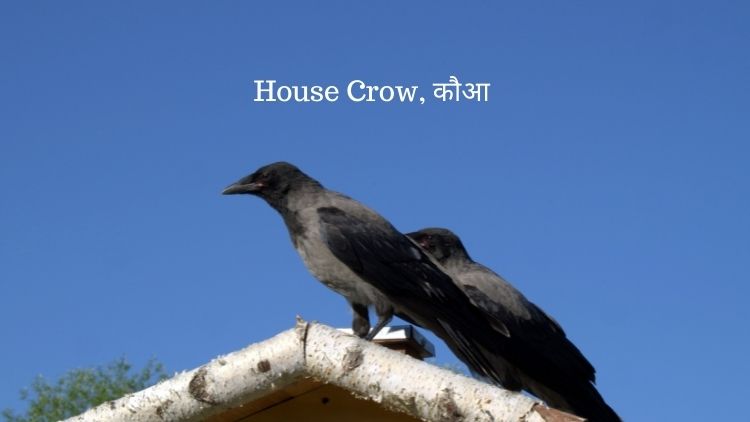The Crow: A Feathered Enigma, House Crow
- Tanweer adil

- 4 सित॰ 2023
- 2 मिनट पठन
Title: The Crow: A Feathered Riddle
The crow, Corvus brachyrhynchos, is a bird that is often misunderstood, under-appreciated and sometimes even reviled. Often associated with omens and symbols of darkness in various cultures, the crow holds a certain mystique. Yet, beyond its seemingly ominous appearance and raucous caw, the crow is a creature that deserves our fascination and respect.
Crows are widely distributed around the world, with different species inhabiting different continents. The American crow, which is the focus of this essay, is a common sight throughout North America. Dressed in sleek black plumage, they possess a keen intelligence that sets them apart from many other bird species.
One of the most remarkable features of the crow is its cognitive ability. These birds have been the subject of many scientific studies, which reveal their problem-solving skills and ability to perform complex tasks. Crows use tools such as sticks and leaves to extract insects from the bark and crevices of trees, demonstrating a level of intelligence that few other birds can match.
Their communication is another area of intrigue. Crows are known for their distinctive caw, a sound that serves many purposes. They use it to alert fellow crows to potential danger, establish territory boundaries, and even communicate their emotional state. This vocality, combined with body language, allows them to communicate effectively within their social groups.
Crows are highly adaptable birds, thriving in a wide variety of environments from forests to urban areas. Their adaptability to human-altered landscapes has led to their frequent presence in cities and suburbs. Although some may view them as insects, their scavenging habits serve an important ecological function by scavenging rotten flesh and other organic matter.
The role of crows in various cultures has been multifaceted. In some ancient civilizations, he was revered as a symbol of wisdom and as a messenger of the gods. In others, superstitions associated them with death and misfortune. Their presence in literature and mythology spans a wide range, from companions of the Norse god Odin to Edgar Allan Poe's sinister poem, "The Raven".
In indigenous cultures, crows have been valued as symbols of change and transformation. His association with death is not necessarily ominous, but may represent the cycle of life, death, and rebirth. This perspective reminds us of the crow's intrinsic connection with the natural world and its balance.
The adaptability, intelligence, and complex social structures of crows have much to teach us about life's resilience in the face of change. As our understanding of these remarkable birds deepens, we are beginning to recognize their role as integral members of ecosystems and our shared world.
In conclusion, the crow is not just a harbinger of darkness; It symbolizes the complexity of nature and its ability to adapt. From their impressive cognitive abilities to their communication skills and resilience in diverse environments, crows are a testament to the richness of the natural world. In taking the time to observe and appreciate these birds, we may find that they provide us with valuable lessons about our place in the tapestry of life.




